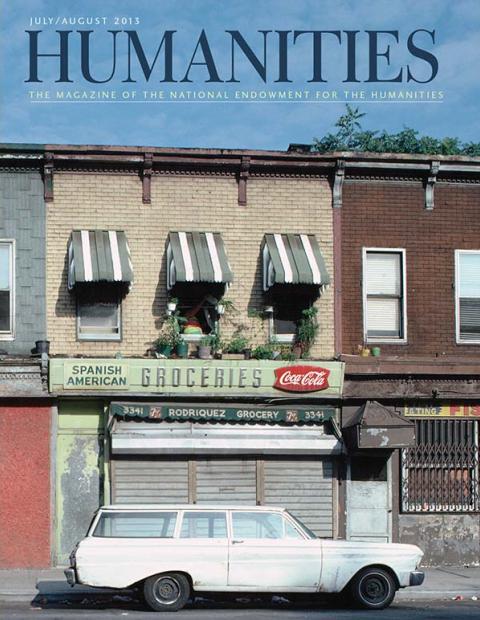The Asian board game known as Go in English and Weiqi (WAY-chee) in Chinese has a lot to say about Eastern thought. Conversely, Asians who play it reveal much about themselves and their culture while talking informally about the game, steeped, as it is, in history and tradition. Played on a board with nineteen horizontal and nineteen vertical lines, there are three hundred sixty-one intersections for players to fill in with pebble-sized pieces or stones—black for one player and white for the other. Unlike chess pieces, the stones have no hierarchical relationship to each other. The game consists of filling in the board from the corners, then the sides, then the unclaimed territory in the middle. When there’s no place else to go, players figure out who won. The game takes years to master—requiring those who wish to rise to the professional ranks to attend Weiqi school and compete on the national level.
In Marc Moskowitz’s NEH-funded documentary Weiqi Wonders: Conversations About the Game of Go in China, he interviews professionals and amateurs, getting them to speak freely about the game they revere as much as Americans do baseball or football. Through subtitles or sometimes in halting but competent English, players delve into the philosophy behind the game, how they came to play it, and its positive effects, as they see it, on children and their education. Sylvia, an amateur now studying at Peking University, talks of giving up normal school for Weiqi school at a young age, at the urgings of a father who cared only for success (vicarious, it seems) at the Weiqi board. Fang Weijing, a professional and one of the few girls playing when she started, reveals the rigorous schedule: “You have to decide whether you want to go to school or train to be a Weiqi player. You can’t do both. There’s not enough time. You train from 9 a.m. to 11:30 a.m., then lunch. Then training starts at 1 p.m., and you go till 4 or 5 p.m. . . . When I first started, I began studying again at 7:30 p.m.”
The career player Sun Yiguo—who is a generation older than the two young women—says, “I think I must be a bad parent. I use the parenting style of my parents—no demands on me and my siblings. They just wanted us to be happy. They didn’t care if we got good grades or not. If you did well, they praised you. If you didn’t do well, they didn’t say anything at all. This is not good parenting in China today because the competition is so fierce.”
Fierce competition was certainly on the minds and in the hearts of those who played Weiqi in China in ancient times—elites and warriors. In libraries, books on Weiqi would be cataloged next to Sun Zi’s Art of War. At other times, books on Weiqi were forbidden because it was thought players would transfer their skillful strategic thinking from the game board to the battlefield.
Since the Cultural Revolution, Weiqi has commonly been played out of doors, often in parks. Formerly, it was played in teahouses or in elegant surroundings, according to Weiqi instructor Hong Feng. Today, however, playing in parks and encouraging Weiqi parties in schools, it’s claimed, are beneficial to society. Two close park-going friends, a generation apart in age, attest to this. The pair, who meet often to play or watch others play, banter lightly at times in the film. “People who play Weiqi are more civilized,” asserts Mr. Ma matter-of-factly, and Mr. Liu follows in the same vein, “There’s no such thing as a bad person who plays Weiqi.” For children today ages five and six—players at the 25 kyu rank, meaning anyone competing anywhere between their first to hundredth game—it’s not about finding a champion. Weiqi can help children face the difficulty of losing. “The competitions,” says Weiqi instructor Mike Hong Po, “aren’t a separate event. It’s part of their education. The goal is . . . to have all the children go through competitions—this helps their abilities.”
In spite of the educational benefits common to all youthful Weiqi players—developing analytical skills, learning to calculate at an early age, reasoning, and discovering original solutions to tough problems—differences in style of play come to the fore internationally. Koreans are very practical players, while Japanese place a strong emphasis on a style of play that is inherently beautiful. The Chinese fall somewhere between the two.
Is there a Babe Ruth of Weiqi? In China, at least, the answer would be a resounding yes. With no hesitation, everyone appearing in the documentary named Nie Weiping. Known as the “Steel Goalkeeper,” he ended a long drought for China in international play, soundly defeating—in nine out of fourteen matches—the Japanese masters at the China-Japan Supermatches from 1984 to 2000.
If Westerners wish to understand Asian patterns of thought, they might do well to start with a game called Go.


